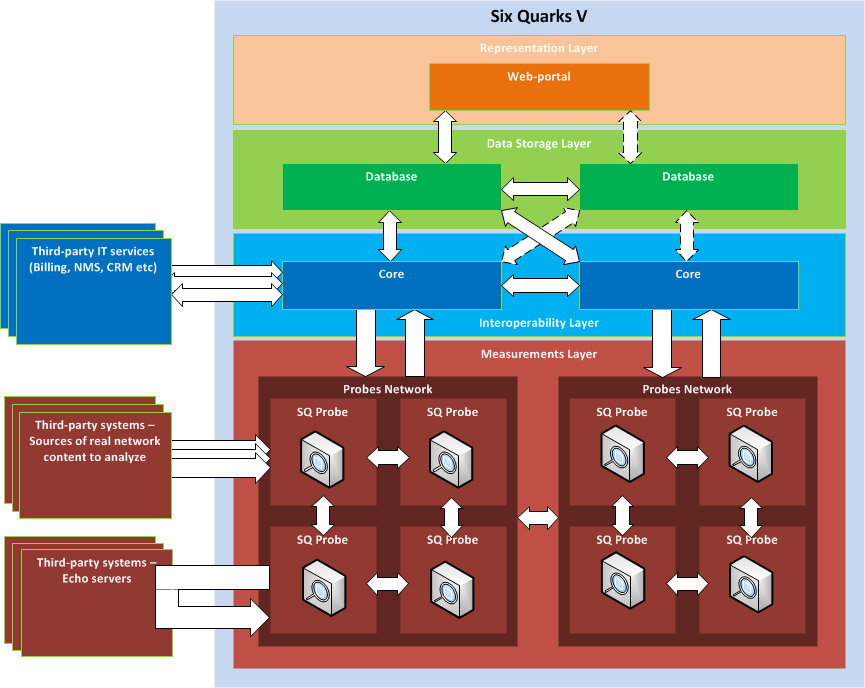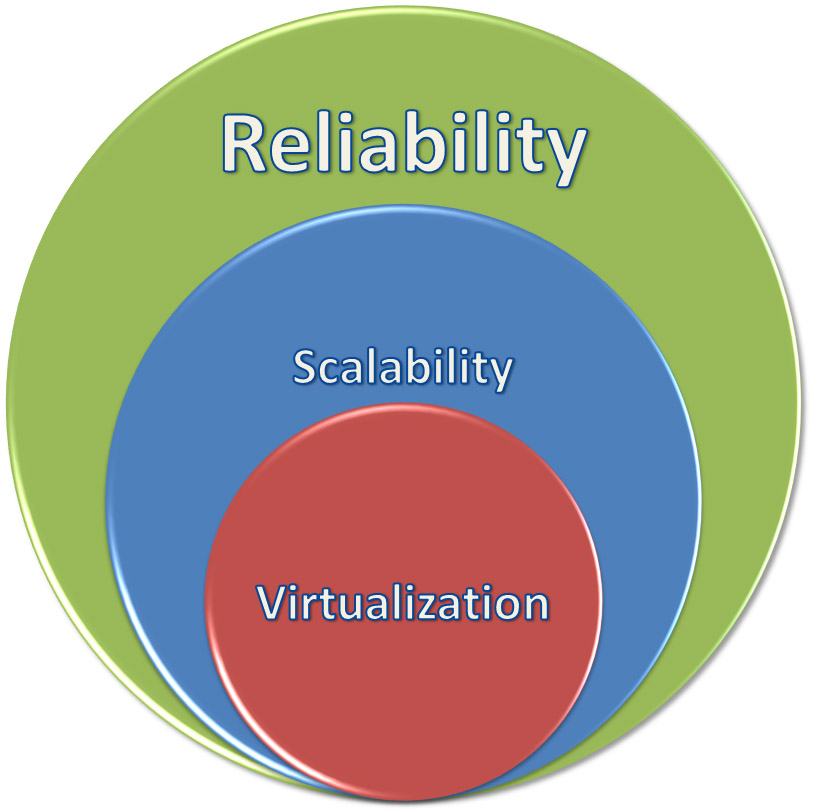Architecture
Multilayer Architecture of Six Quarks V
The Six Quarks V system has multilayer hierarchical architecture consisted of several subsystems.

At the lower layer - measurement layer - structured hierarchical networks of Six Quarks SQ probes are positioned. Depending on types of agents functioning on the probe it is able to:
- receive and analyse real network traffic from external systems, for instance, when monitoring IPTV quality, quality agent of a Six Quarks probe joins multicast groups using IGMP protocol and receives IPTV streams;
- set a test channel to other Six Quarks SQ probe and create bi-directional test traffic, as for detailed network quality test;
- create test traffic to external network device that maintains traffic mirroring in order to receive it back to the probe for examination.
Measurement layer, apart from external systems used for conducting tests, communicates only with interoperability layer.
The next - interoperability layer - includes the core that organizes probes, sets up tests and measurement devices, and collects test results for their processing and delivery to storage layer. Interoperability layer is also in charge of communication with external information systems providing integration of Six Quarks V into the customer's network infrastructure.
Storage layer includes database management system that arranges ordered storage of data and settings. Storage layer communicates only with two layers of the complex: interoperability layer and representation layer.
The upper - representation layer - communicates with storage layer. This layer contains the virtualized portal of the Six Quarks V system that allows the following:
- managing the complex in whole: setting operating parameters for the portal itself, the core and probes;
- setting tests on probes;
- receiving test results in visualized form or as customizable reports.
Advantages of Six Quarks V Architecture

Isolation of layers in Six Quarks V architecture and their strict hierarchical structure makes Six Quarks V a stable and reliable system giving an opportunity for unlimited enhancement and scaling of the system, which provides quality assurance for networks of any size - from miniature to transnational. Each layer maintains both one and several subsystems operation in order to ensure security and scalability as the controlled network grows. Six Quarks V doesn't require geographical uniformity of its subsystems on the same layer, which enables geographically distributed installation. New copies of subsystems may be added jointlessly to the same level of the existing installation, with no modifications required on other layers. Thus the system can gradually increase its measuring capacity while initial investments are considerably cut down. Layer architecture provides an unexampled feature: the complex can monitor a whole set of networks, not only a single one. So a single complex can service networks of several enterprises or providers giving all customers full access to consistent and verified data with strict isolation of access to administration networks of different legal entities while maintaining exclusive control of networks by enterprises and providers. This opportunity is fixed at the most upper layer, in visualized portal that may exist in a number of copies within a single installation as well.
Hardware
Each subsystem of interoperability, storage and representation layers is installed on a separate server of x86-64 architecture. Servers are based on GNU Linux. Six Quarks doesn't have any special demands to server manufacturer giving free rein to the customer in this respect.

For small installations to reduce capital investments of the customer systems of different layers may be placed on one hardware.
Six Quarks SQ probes are used on measurement layer.
